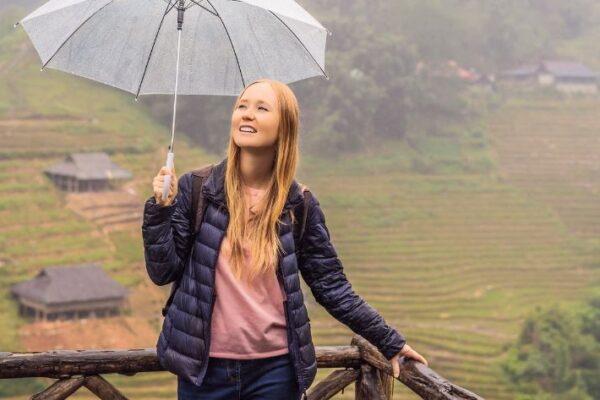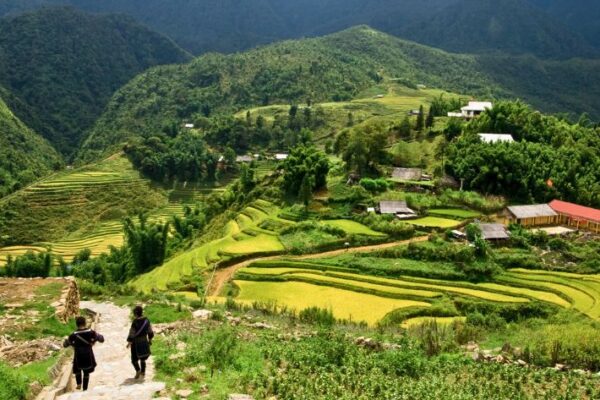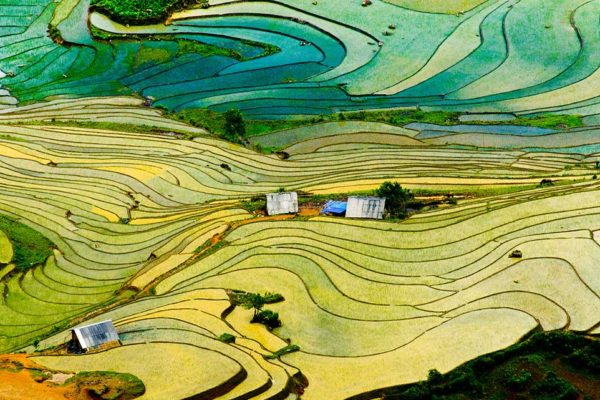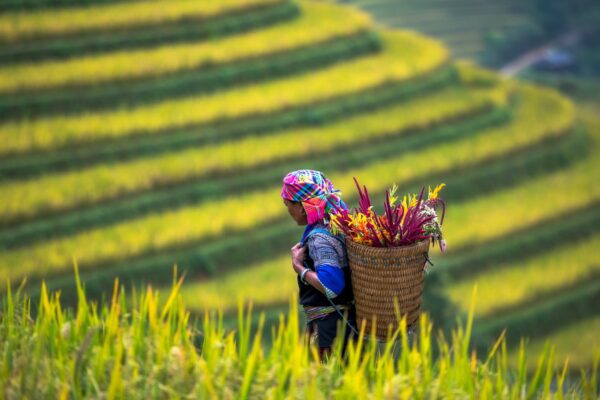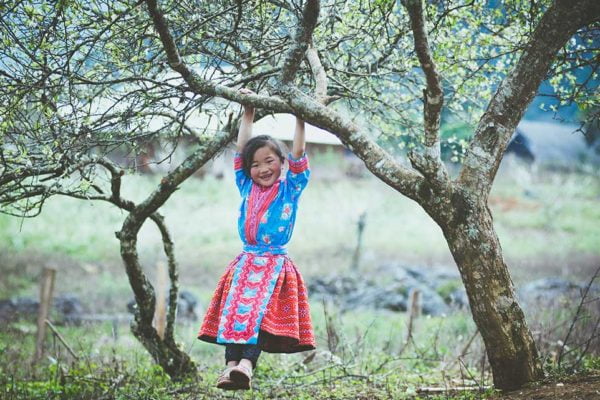Explore 9 Best Things To Do In Sapa Besides Trekking

Sapa, located in northwest Vietnam, is celebrated for its stunning rice terraces, refreshing mountain climate, and rich ethnic minority culture. The region offers a wealth of trekking opportunities, taking you through the picturesque mountains and smaller ethnic villages.
While trekking is the primary draw for visitors to Sapa, there are many other activities to enjoy. This guide will highlight 9 of the best things to do in Sapa, including gaining insights into life in ethnic villages and riding a cable car to Vietnam’s highest peak.
Top Best Things To Do In Sapa Besides Trekking
Visit Local Markets
Sapa and the surrounding areas are home to several lively local markets that offer a fascinating glimpse into the daily life and culture of the region’s diverse ethnic minority groups. Two of the most popular and vibrant markets to visit are:
- Bac Ha Market
Located about 1.5 hours from Sapa, Bac Ha Market is one of the largest and most colorful markets in the region. It takes place every Sunday and is primarily frequented by the Flower H’mong, Red Dao, and other ethnic minority groups.
At Bac Ha Market, you can browse stalls selling a wide variety of handwoven textiles, traditional clothing, silver jewelry, basketry, woodcarvings, and other handicrafts. The market is also a hub for trading agricultural produce, livestock, and household goods. Wandering through the bustling market stalls provides an immersive cultural experience and an opportunity to interact with the local vendors.
- Sapa Market
The Sapa Market is in the heart of the town of Sapa and is open daily. While being smaller than Bac Ha Market, Sapa Market is still an excellent place to shop for unique souvenirs and local products. You can find a diverse array of handmade textiles, embroidered goods, jewelry, and handicrafts produced by the H’mong, Dao, Giay, and other ethnic minority artisans. The market also sells fresh produce, meat, and other daily necessities. Exploring the Sapa Market allows you to witness the vibrant commercial and social hub of the town.

Unique souvenirs that you can find in Bac Ha Market
Visiting these local markets is a fantastic way to not only shop for one-of-a-kind items but also to gain a deeper understanding of the cultural traditions and livelihoods of the people in the Sapa region. The bustling atmosphere, colors, and interactions with the vendors provide a memorable cultural immersion experience.
Explore Lao Chai and Ta Van Villages
Situated in the scenic Muong Hoa Valley, these picturesque ethnic minority villages might offer the chance to learn about the local culture, traditions, and way of life.
- Lao Chai Village
Lao Chai is a traditional H’mong village nestled among emerald-green rice terraces and towering peaks. The village offers a glimpse into the daily lives of the H’mong people, who have resided in this region for centuries.
Visitors can take a guided trek through the village, stopping to observe the locals tending to their rice fields, weaving textiles, or preparing traditional foods. The village is renowned for its beautifully preserved wooden stilt houses, ornate embroidered costumes, and intricate silver jewelry crafted by skilled artisans.
- Ta Van Village
Nestled alongside the Muong Hoa River, Ta Van is an idyllic village inhabited by the Dzay ethnic minority, offering a serene and charming ambiance. The village showcases traditional wooden houses, terraced rice fields, and scenic suspension bridges, creating a picturesque setting for exploration.
During your visit, you will have the opportunity to meander through tranquil pathways, engage with the amiable locals, and gain insight into the customs of the Dzay people, from their distinctive textile weaving techniques to their captivating traditional musical performances. With its breathtaking natural backdrop and cultural heritage, Ta Van is an authentic and captivating destination for visitors seeking a meaningful and enriching experience.

The countryside view of Lao Chai village
Our Suggestion
Hiking to these picturesque ethnic minority villages is a highlight for many visitors to Sapa. The treks through the lush landscapes provide opportunities to immerse yourself in the local way of life, observe traditional practices, and gain a deeper appreciation for the diverse cultures that thrive in this mountainous region of Vietnam. The hospitality of the villagers and the chance to purchase handmade crafts directly from the artisans make these village visits both culturally enriching and economically beneficial for the local communities.
>> Read More: Hiking In Sapa – Best Time, Planning, Treks and Trails
Take a Cable Car to Fansipan Peak
For those seeking to ascend to the “Roof of Indochina,” the Fansipan Cable Car is an efficient and scenic way to reach the summit of Fansipan Mountain, the highest peak in Vietnam at 3,143 meters (10,312 feet) above sea level.
The Fansipan Cable Car, which opened in 2016, is a remarkable engineering feat that whisks visitors up the mountain in just 15 minutes, providing breathtaking panoramic views along the way. The cable car station is located in the town of Sapa, making it easily accessible for travelers.
Some key highlights of taking the Fansipan Cable Car include:
- Effortless ascent to the “Roof of Indochina” without the need for a strenuous multi-day hike
- Awe-inspiring views of the majestic Hoang Lien Son range and Sapa’s dramatic topography
- Access to the Fansipan Summit, which offers temples, shrines, and hiking trails
- Opportunity to appreciate the impressive engineering feat of the cable car system itself
- At the summit, there are several observation decks, temples, and hiking trails that allow travelers to further explore the mountain’s natural wonders

Reaching the top station while enjoying the sweeping vistas
Our Notes
The Fansipan Cable Car is an excellent option for visitors who want to experience the grandeur of Fansipan Mountain without the physical challenges of a demanding trek. It allows travelers of all ages and fitness levels to conveniently reach the highest point in Vietnam and soak in the breathtaking scenery of the Sapa region from above.
Visit Muong Hoa Valley
Nestled amidst the verdant mountains of Sapa, the Muong Hoa Valley is a breathtaking UNESCO World Heritage Site that offers visitors a glimpse into the rich cultural heritage and stunning natural landscapes of the region.
Here are what you can expect from this natural beauty:
- Terraced Rice Fields
The Muong Hoa Valley is renowned for its meticulously crafted terraced rice fields cascading in vibrant green hues. These terraces, carved into the rugged terrain over generations, are a testament to the agricultural expertise of the local ethnic minority communities. Visitors can explore these picturesque landscapes and observe the seasonal changes as the fields transition from lush greenery to shimmering golden hues during the harvest season.
- Ethnic Minority Villages
Sapa’s charming villages are home to diverse ethnic minority groups, including the H’mong, Dao, and Giay people. Visitors can explore traditional settlements, stroll through narrow streets, visit artisan workshops, and engage with friendly residents to understand the region’s rich cultural heritage.

Muong Hoa Valley’s terraced rice fields
Enjoy the Sapa Night Market
As mentioned above, this lively marketplace is a popular stop for visitors but it comes alive every evening, drawing both locals and travelers alike. This vibrant and bustling focal point of the town can offer visitors an authentic glimpse into the local culture and traditions.
- Handicrafts and Textiles
The market is filled with vibrant stalls displaying handcrafted products made by Sapa’s skilled artisans. Visitors can explore embroidered garments, woven textiles, silver jewelry, woodcarvings, and unique souvenirs, all supporting the local economy.
- Tantalizing Street Food
Sapa Night Market offers a vibrant shopping experience and a variety of traditional Vietnamese and local ethnic minority street foods. Visitors can enjoy grilled meats, noodle dishes, hot pot, banh mi, and sticky rice desserts.
- Immersive Cultural Encounter
Wandering through Sapa Night Market immerses visitors in the lively local culture. The vibrant atmosphere, twinkling lights, and sounds of conversation and music create a memorable experience. Interacting with friendly vendors, observing traditional craftsmanship, and savoring regional cuisine offer a deeper understanding of the ethnic minority communities in Sapa.

Exploring the Sapa Night Market is a highlight for many travelers
Immerse in the Silver Waterfall
Nestled amidst the lush, forested slopes of the Hoang Lien Son mountain range, the Silver Waterfall is a breathtaking natural marvel that beckons visitors to Sapa. This captivating cascade, fed by the crystal-clear waters of the Muong Hoa River, offers a serene and rejuvenating escape from the bustling town.
- Picturesque Picnicking
The area surrounding the Silver Waterfall offers ample opportunities for visitors to enjoy a peaceful picnic lunch, surrounded by the lush, verdant foliage and the waterfall’s mesmerizing display. Guests can spread out a blanket, unpack a delectable local feast, and savor the serene natural setting while recharging for the next leg of their Sapa adventure.
- Cascading Splendor
As the hike draws to a close, the first glimpse of the Silver Waterfall’s cascading waters comes into view, cascading down the towering rock face in a mesmerizing display of power and grace. The waterfall’s striking silver-hued appearance, a result of the mineral-rich water, lends it an ethereal and enchanting quality, captivating all who witness it.
- Refreshing Respite
Upon reaching the waterfall’s base, visitors can bask in the tranquil ambiance and cool mist, finding respite from the day’s heat and humidity. The crystalline pool at the waterfall’s base invites guests to dip their feet, soak in the soothing waters, and revel in the calming sounds of the cascading flow.
- Photographic Perfection
The Silver Waterfall’s breathtaking beauty and picturesque setting make it a prime destination for nature enthusiasts and photography enthusiasts alike. Visitors can capture the waterfall’s majestic form, the surrounding landscapes, and the interplay of light and water to create lasting memories of their Sapa experience.

Silver Waterfall, a stunning natural wonder in Sapa
Taste the Local Cuisine
From traditional mountain dishes to innovative interpretations of classic Vietnamese fare, the local cuisine in Sapa offers a tantalizing array of flavors that invite visitors to embark on a culinary adventure.
- Authentic Mountain Fare
The diverse culinary tradition of Sapa is rooted in the region’s natural resources. Local specialties like Thang Co, a hearty stew, and Banh Mi Cha, a savory steamed rice cake, reflect the resourcefulness and deep connection to the land of the local ethnic minority groups.
- Farm-to-Table Delights
Sapa’s rural setting and thriving agricultural sector have led to a vibrant farm-to-table movement. Local restaurants and eateries directly source ingredients from nearby farms. Guests can enjoy dishes made with freshly harvested produce, such as Goi Cuon (spring rolls) and Pho, a nourishing noodle soup showcasing the region’s high-quality meats and herbs.
- Locally Sourced Ingredients
Sapa’s rich agricultural landscape provides locally sourced ingredients that enhance the vibrant flavors of the region’s cuisine. Visitors can savor wild mushrooms, passion fruits, and mountain herbs and spices in every dish.

Savor the unique and unforgettable tastes that define the Sapa experience
Indulge in a Traditional Herbal Bath
After a day of immersing yourself in Sapa’s breathtaking landscapes and vibrant cultural experiences, there’s no better way to unwind and rejuvenate than with a traditional herbal bath.
Deeply rooted in the holistic healing practices of the region’s ethnic minority communities, these restorative baths offer visitors a truly unique and rejuvenating experience. Some experiences that attract many visitors:
- The Healing Power of Herbs: The herbal baths of Sapa feature a blend of local medicinal plants and herbs chosen for their unique therapeutic properties, including the calming effects of lemongrass and the muscle-relieving properties of ginger. These natural ingredients work together to promote relaxation and restore the body’s natural balance.
- The Mountain Ambiance: The herbal bath facilities in Sapa are situated in serene, natural settings, allowing visitors to fully immerse themselves in the calming ambiance of the mountainous landscape. Surrounded by lush vegetation and the sound of flowing water, the herbal bath experience becomes a true sensory journey, transporting visitors to a state of deep tranquility and rejuvenation.
- Customized Treatments: Sapa’s herbal bath facilities offer customized treatments with a variety of herbal infusions designed for specific health concerns or desired outcomes. The knowledgeable staff provides personalized assistance for a tailored experience.
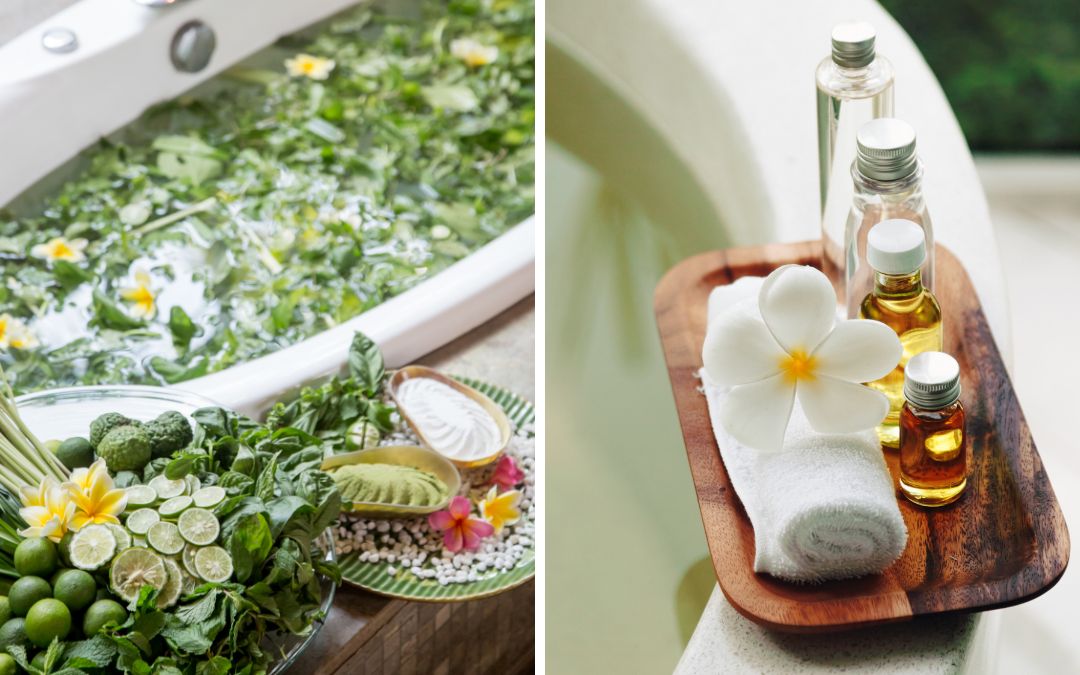
Traditional herbal bath in Sapa is the healing wisdom of its people
Join a H’mong Sewing Class
Sapa is known for its rich cultural heritage, particularly the skilled craftsmanship and intricate designs of the H’mong ethnic minority group. Visitors to Sapa can take part in H’mong sewing classes to learn about the traditional techniques and artistry involved in creating the iconic H’mong embroidery and garments.
- Hands-On Instruction
Participants will be guided by experienced H’mong artisans to learn traditional techniques and skills passed down through generations. They will master delicate embroidery stitches, intricate embellishments, and every step of the sewing process, gaining an appreciation for the artistry and dexterity required to create these exquisite textiles.
- Personalized Projects
In the sewing class, participants can create their own unique H’mong-inspired textile project such as an apron, wall hanging, or accessory. With guidance from skilled instructors, you can experiment with techniques, choose colors and motifs, and add personal touches for a one-of-a-kind creation capturing the essence of the H’mong textile tradition.
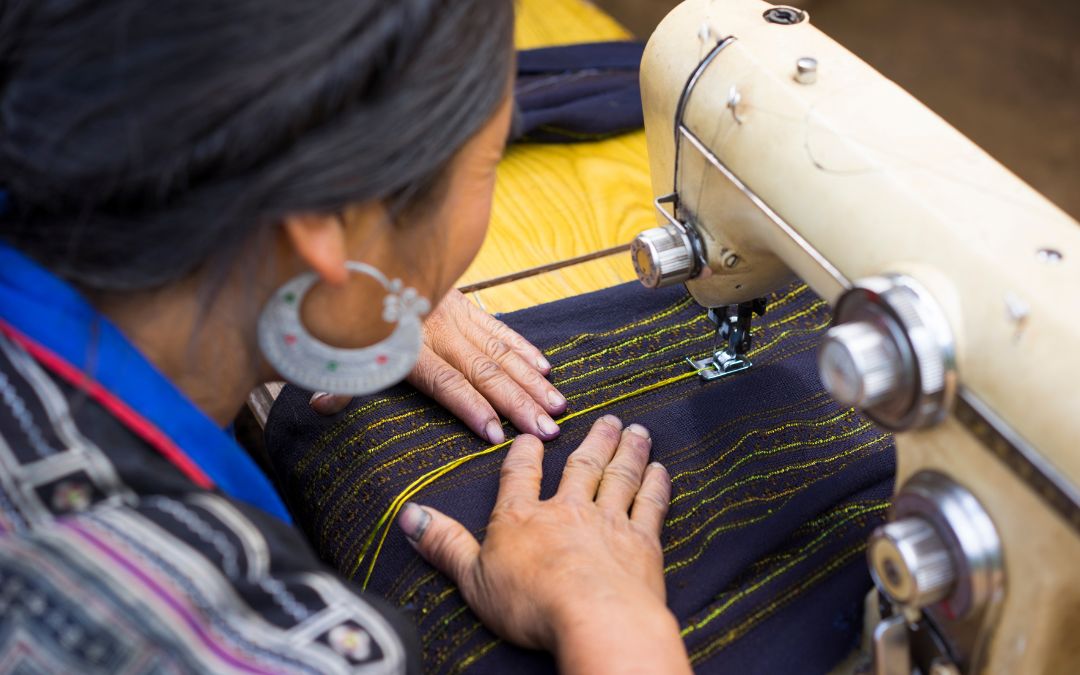
Learning the art of H’mong sewing is a truly transformative experience
When To Visit Sapa?
Sapa is best visited from March to May and September to November, with September being the most beautiful month. This is the time when the rice is ready for harvest, and the terraced rice fields are at their most beautiful, with brilliant yellow and golden hues.
Spring spans from late March until early April. Following a cold winter, the months are getting warmer and more pleasant. The scenery appears greener than in previous seasons, making it ideal for trekking. Enjoy magnificent views while trekking in the mountains with perfect weather, neither too hot nor too cold. The sky is clear, and you have excellent photo opportunities. In addition to the pleasant weather and lush scenery, it is cherry blossom season. Along the route, large fields and gardens are blooming with white and pink flowers.
With the rain lessening in September, trekking and traveling around becomes easier and more enjoyable. During the day, it can still get pretty warm, but the summer heat will be gone. The harvest season begins in September and ends in October. Sapa’s rice fields are at their peak at this time of year. The golden rice fields will run through the mountains like golden ribbons, creating magnificent scenery. As a result, autumn is the greatest time to visit Sapa.
>> Read More: Accommodation in Sapa – Guide for Selection & Our Picks for Stays
Discover the Diverse Wonders of Sapa With APT
From immersing in the local markets to indulging in traditional herbal baths, Sapa offers enriching experiences beyond trekking. Visitors can cultivate a deeper understanding and appreciation for the region’s cultural heritage, natural landscapes, and the warm hospitality of its people. Sapa has something special for every traveler, whether you’re seeking to expand your culinary horizons, delve into the area’s history, or bask in the mountain environment.
To curate your perfect Sapa adventure and unlock the full potential of this remarkable destination, let Asia Pioneer Travel, a top-notch bespoke travel agency craft unforgettable journeys for you.
By seamlessly blending the must-see attractions with the hidden gems of Sapa, our amazing travel designers can help you unlock a truly enriching and personalized travel experience. Embark on your Sapa adventure and let the wonders of this remarkable destination leave a lasting impression on your heart and mind.
